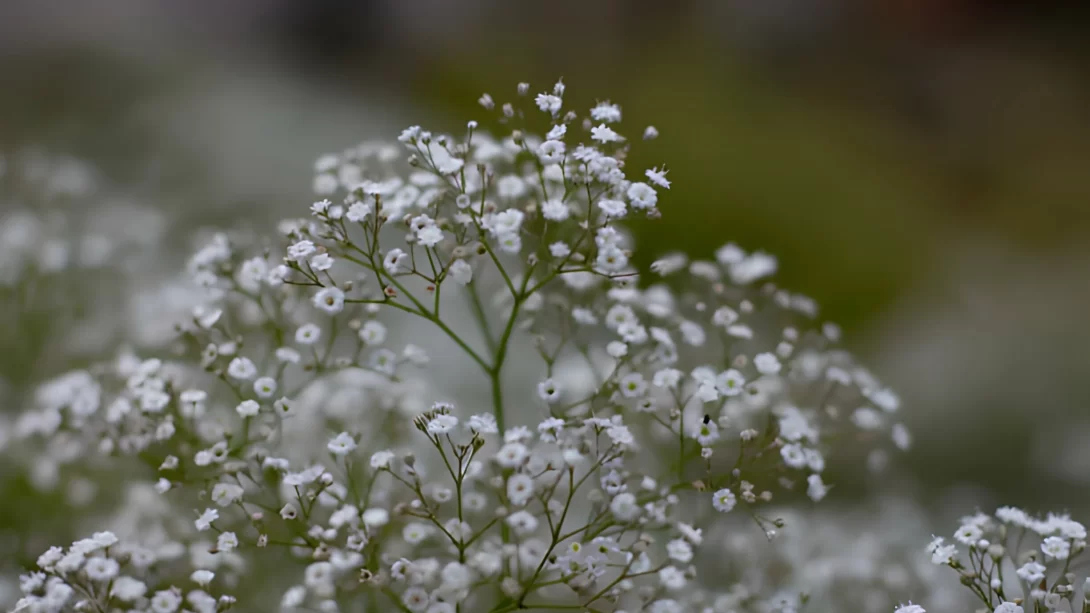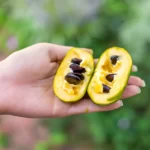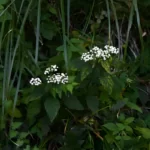Baby’s Breath, scientifically known as Gypsophila spp., is a popular choice in both gardens and floral arrangements due to its delicate, airy flowers that add a touch of whimsy to any setting. This charming plant, often used for filling in bouquets, has raised questions among pet owners, particularly those with dogs. A major concern is whether Baby’s Breath is safe for their canine companions. This article aims to address this concern, providing dog owners with essential information about Baby’s Breath and its potential toxicity to dogs.
Baby’s Breath
Baby’s Breath is easily recognizable by its small, clustered white or pink flowers, creating a misty effect in floral designs. There are several varieties of Gypsophila, with Gypsophila paniculata being one of the most common. This plant is not only valued for its aesthetic appeal but also for its hardiness and ease of growth. It thrives in well-drained soil and full sunlight, making it a suitable choice for many gardeners. Originating from Eastern Europe and Asia, Baby’s Breath has found a place in gardens and vases worldwide.
Toxicity in Plants
The concept of plant toxicity is vital for pet owners to understand. Some plants contain natural compounds that can be harmful to pets when ingested. These compounds can range from mild irritants to severe toxins that can cause serious health issues in animals. The reasons plants develop these compounds vary, often serving as a defense mechanism against predators, including insects and animals. For pet owners, knowledge of which plants are toxic is crucial for creating a safe environment for their pets.
Baby’s Breath and Dogs
When it comes to Baby’s Breath and its safety for dogs, the answer is not entirely straightforward. While Baby’s Breath is not the most toxic plant to dogs, it is not entirely free from concern. It contains saponins, a group of chemical compounds that can cause mild to moderate gastrointestinal upset in dogs. These saponins are found in various plant species and serve as a natural insecticide and fungicide. Although the level of toxicity is generally low, it is important for dog owners to be aware of this potential risk.
Symptoms of Toxicity
If a dog ingests Baby’s Breath, the most common symptoms are usually related to the gastrointestinal tract. These can include vomiting, diarrhea, and possibly drooling or signs of nausea. In more sensitive dogs or in cases of large ingestion, more severe symptoms such as lethargy or a loss of appetite could occur. It is important to monitor any dog that has ingested Baby’s Breath and to be aware of these potential symptoms. Early detection and response are key in managing any possible toxic effects.
Prevention and Safety
To ensure the safety of dogs, pet owners who also enjoy gardening need to be proactive. This includes avoiding the planting of Baby’s Breath within easy reach of pets or choosing a different, non-toxic plant for gardens and bouquets. When Baby’s Breath is present in the home, keeping it in an area that is inaccessible to dogs can prevent accidental ingestion. Educating family members, especially children, about the importance of keeping such plants away from pets is also crucial. Regular monitoring of both plants and pets can help in preventing any unfortunate incidents.
First Aid and Treatment
If you suspect your dog has ingested Baby’s Breath, the first step is to assess their condition. Look for any immediate signs of distress or the symptoms previously mentioned. If symptoms are mild, offering fresh water and monitoring your dog closely may be sufficient. However, in cases of severe symptoms or if you are unsure of the quantity ingested, it is vital to contact a veterinarian immediately. Do not induce vomiting unless specifically instructed by a professional. The veterinarian may provide treatments such as activated charcoal to bind the toxins or administer IV fluids to support hydration and recovery.
Alternative Pet-Safe Plants
For dog owners who love gardening but want to ensure their furry friends are safe, there are numerous non-toxic plant alternatives. Some pet-friendly options include Rosa spp. (Roses), Orchidaceae spp. (Orchids), and Aster spp. (Asters). These plants offer beauty and variety without the risk associated with Baby’s Breath. When selecting plants for your garden or home, always research or consult a reliable source to confirm their safety for pets.
Conclusion
In summary, while Baby’s Breath is not the most toxic plant to dogs, it does pose a risk due to its saponin content. Being vigilant about the plants in your environment, recognizing symptoms of toxicity, and knowing how to respond can go a long way in keeping your dog safe. Remember, a pet-friendly garden doesn’t mean compromising on aesthetics. There are many beautiful and safe alternatives to Baby’s Breath that can adorn your garden and home while ensuring the well-being of your canine companions. Responsible gardening with pets in mind not only creates a harmonious environment but also protects the health and happiness of all your family members, furry ones included.




